Strategies to trade futures are a key factor when it comes to trading since they will determine the way in which this activity will be approached.
Each trader, depending on the strategy he/she carries out, will develop a particular way of trading.
They will be monitoring the market more or less frequently, paying attention to certain indicators and operating in a particular market, among other conditioning factors.
Broadly speaking, there are two ways to profit from futures trading. One involves taking advantage of the benefits of opening long-term positions, which consists of holding the purchase of a contract for a long period of time and selling it at a better price in the future.
The other way profits from more liquid markets, since its purpose is to make profits in the short-term, with positions that are opened and closed in the span of a day or a few hours.
Any strategy to trade futures within these two main ways has its advantages and disadvantages depending on how you look at it.
It is important to remember that not all strategies are for all traders, since each one involves a different way of doing things that does not adapt to all rhythms of life.
Below we will show you the most popular and widely used strategies to trade futures. Each will have its own pros and cons so that you can choose the one that best suits you and your objectives, with sufficient information.
Scalp Trading
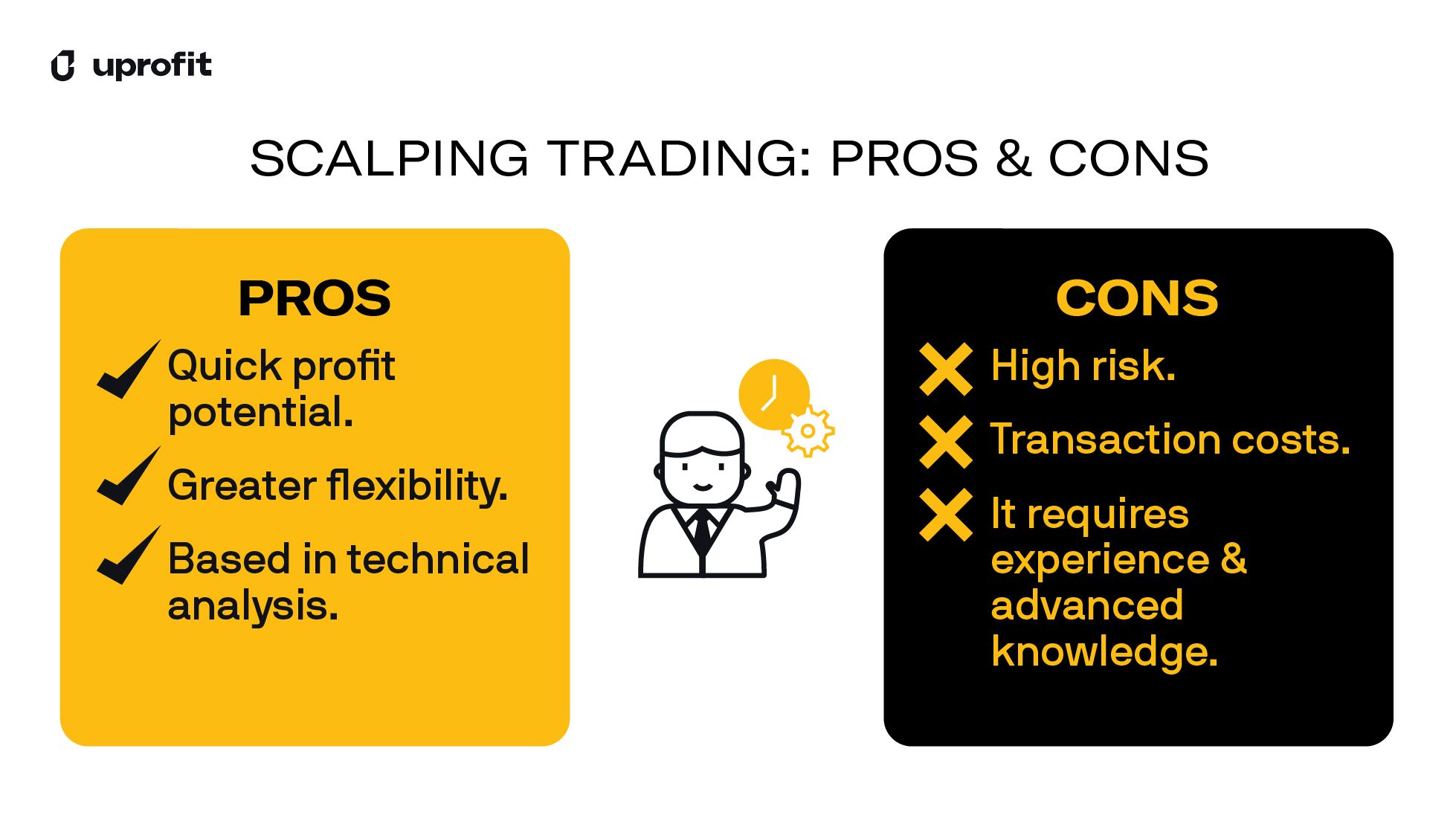
Scalp Trading involves the trading of futures contracts in the short-term, usually in periods no longer than one trading day.
The objective is to take advantage of volatile markets with high levels of liquidity to make profits.
It is one of the strategies to trade futures that requires more knowledge and experience as it involves a large exposure to risk.
However, if you are the type of trader who prefers small and dynamic trades, this method may be for you.
The premise, usually followed by traders who prefer scalping, is that in liquid markets, prices fluctuate constantly in small amounts and their objective is to take advantage of a part of these variations to open quick positions that allow them to add profits.
Usually, scalpers use technical tools to know when to trade, such as charting and trend analysis.
This is one of the most popular strategies to trade futures, but it also has some features that are a bit tricky to manage.
It is a method that is not recommended to start with, but that many experienced traders use with good results.
To analyze it in more depth, we will review the pros and cons of Scalp Trading:
Pros:
- Quick profit potential: if the trader manages to execute a good technical analysis that leads them to take the right moves, their profits can increase substantially and quickly.
- Greater flexibility: scalpers can choose to trade in any market they want, as long as it is one that is highly liquid. This allows them to trade at almost any time of the day, and with a wide variety of assets to choose from. Also, as it is a short-term strategy, they can react better to what happens in the market and adjust their operations on a day-to-day basis.
- Less reliance on fundamental analysis: this benefit depends on the preferences of each trader. If you prefer technical analysis, this may be the right strategy to trade futures for you.
Cons:
- High risk: Scalp Trading is considered a high-risk strategy, because it requires constant attention to the market and making quick and accurate decisions. This can be stressful and exhausting, especially if you are not very knowledgeable and are the kind of person who prefers not to be constantly aware of your trades.
- Transaction costs: as you open and close many trades, transaction costs, also known as commissions, can be high if you decide to pursue this strategy. It all depends on the amount of contracts you trade and how accurate you are with your entries.
- Increased attention required: scalp traders must keep an eye on the news and perform regular market analysis. Therefore, discipline and consistency in trading is required.
- Experience and advanced knowledge in trading is necessary: if you are a beginner, a strategy that requires quick reactions is not ideal for you.
Trend Trading
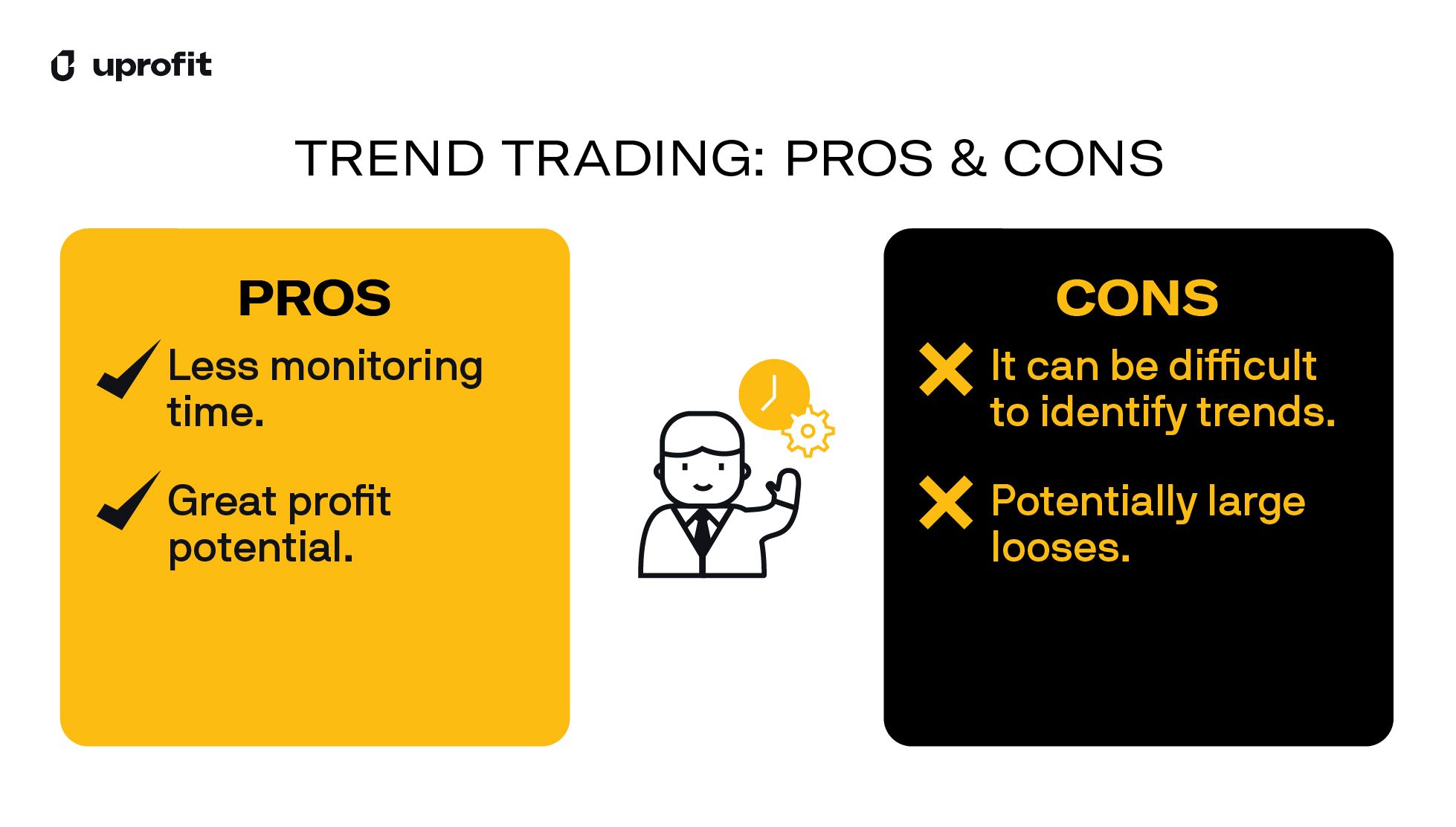
Trend trading is a trading strategy that relies on technical analysis to predict when the price of an asset is about to rise or fall and, therefore, to determine when it is convenient to open or close a position in the market.
To implement this type of trading, it is necessary to study and know a little about trend analysis, but it is not as complex of analysis compared to that used in other strategies to trade futures.
In general, trend traders have strict entry and exit requirements within their trading plan that only allows them to trade in the direction of the trend and never counter-trend trade.
Let’s look at some of the pros and cons of trend trading.
Pros:
- Less monitoring time: compared to the strategies we have been reviewing, as it is a type of trading that develops over a slightly longer period of time, it requires less monitoring than short-term strategies.
- Great profit potential: if you become an expert in technical analysis, you can make great profits from trend trading.
Cons:
- It can be difficult to identify trends: you may spend quite some time in the learning phase, so your gains will not be as immediate as in short-term strategies.
- Potentially large losses: if the market moves against the trader, the risk when using this strategy is quite large. In addition, it can be difficult to know when to exit a position. As mentioned, it requires a lot of prior study.
End-of-Day Trading
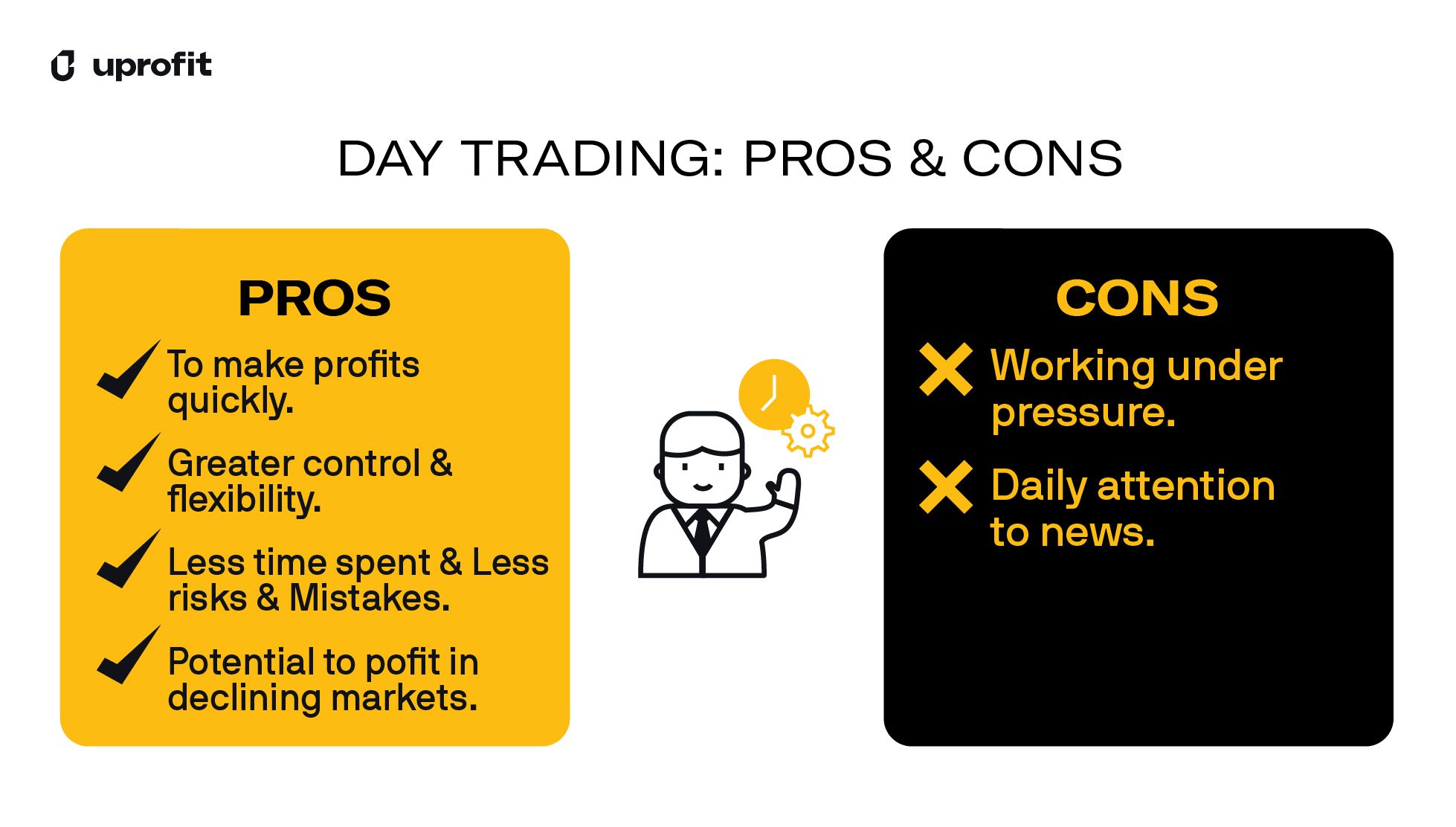
The End-of-Day Trading strategy is based on the idea that market behavior during a trading day is largely random and that short-term price movements are difficult to predict.
With this in mind, traders who use this strategy to trade futures take advantage of the market close to avoid sharp market movements and take advantage of the more predictable movements that occur at the end of the trading day.
Pros:
- Ability to avoid the sharpest daily movements: unpredictable news and events that happen throughout the day can generate unexpected risk, which end-of-day traders seek to avoid.
- Less market monitoring: this strategy provides the opportunity to make more informed and less hurried decisions, without the need to constantly monitor what is happening in the market.
Cons:
- Missed opportunities: news events can generate short-term profit possibilities and trends can do so in the long-term. The trader using this strategy does not usually take advantage of these opportunities.
- Higher volatility at closing: depending on the market and the asset in question, the end of the day is often a time of greater fluctuations than at other times. This can generate greater risks for the trader.
Swing Trading
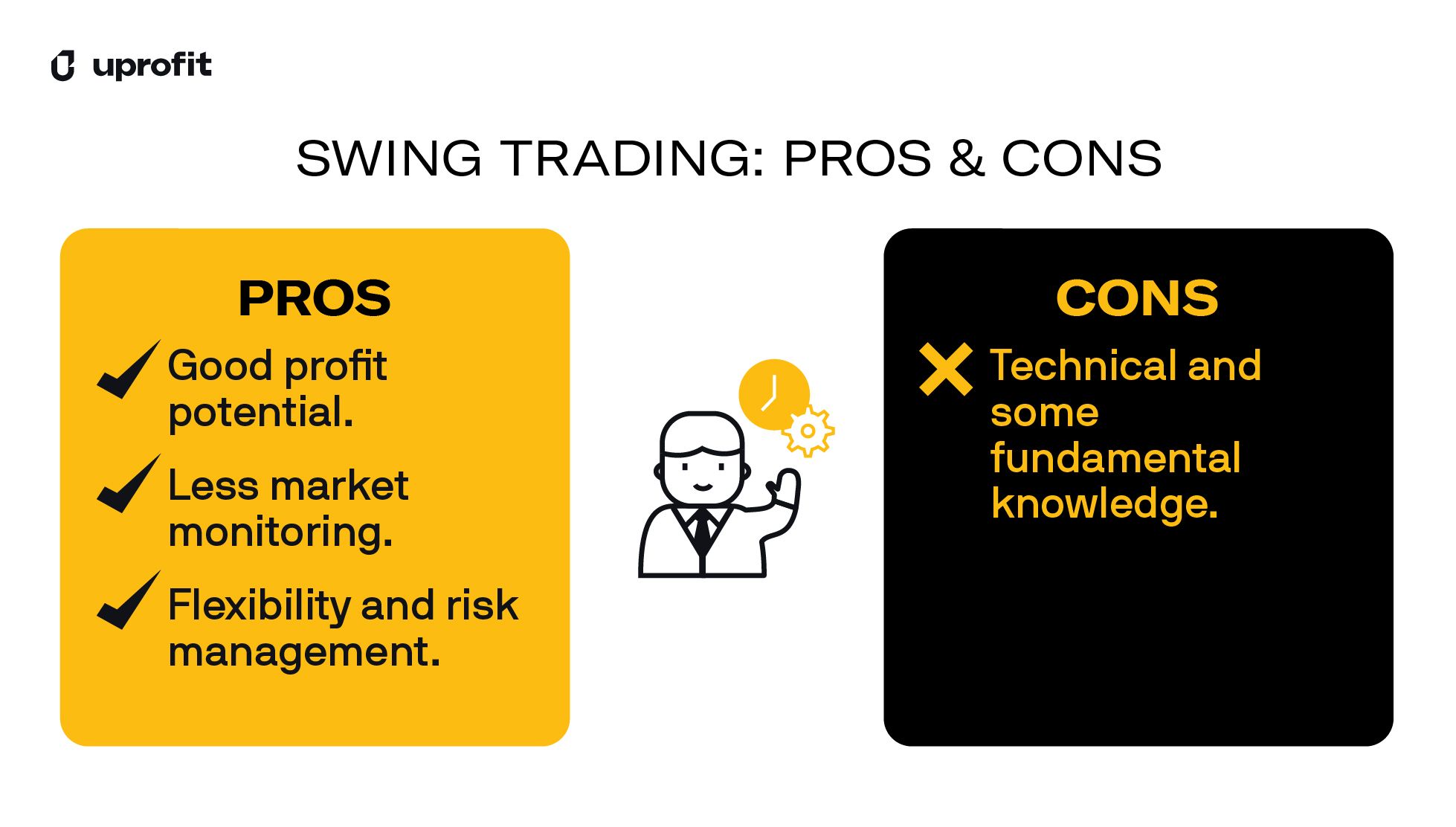
Swing Trading makes operations in the medium or long-term, and in general, traders who implement this strategy use certain indicators of technical analysis to decide when to open or close a position in the market.
The objective of this strategy is to take advantage of the price swings of a given financial asset, thanks to the identification of patterns in it.
Among the most popular strategies to trade futures, swing trading is widely chosen for its advantages, but it also has some disadvantages that are worth reviewing before putting it into practice:
Pros:
- Good profit potential: this strategy allows you to take advantage of medium and long-term price trends, so it can present several profit opportunities.
- Less monitoring: since it is not a short-term strategy, it does not require constant market monitoring.
- Flexibility and risk management: swing trading allows traders to adapt to market changes, which enables better risk management.
Cons:
- Technical knowledge and some fundamental knowledge: this strategy requires knowledge in both types of market analysis, as it is important to take into account both indicators and patterns and trends.
- Risk Management: This will require a larger amount of risk on each trade as you are looking for a much bigger profit.
Position Trading
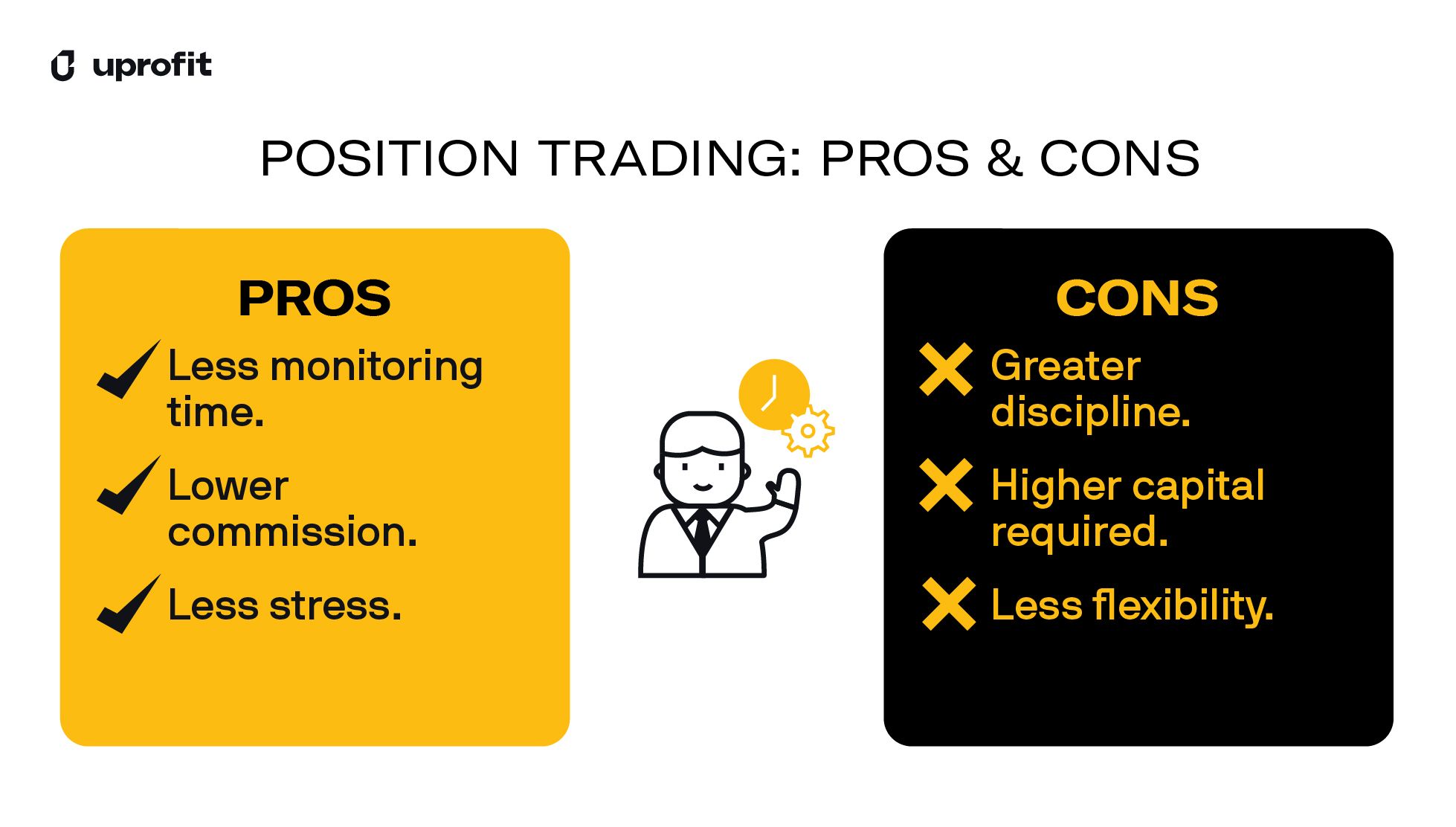
This is a long-term strategy to trade futures that consists of maintaining an open position in a financial asset for a prolonged period of time, with the objective of making profits when the price of the asset rises.
Position traders must have knowledge in fundamental market analysis, mainly, and be able to identify opportunities according to the profitability of certain companies or productive sectors.
This is one of the most popular strategies to trade futures for those traders who have a long-term view of the market, which requires study and patience.
Pros:
- Less monitoring time: as it is a long-term strategy, it does not require constant market monitoring.
- Lower commissions: each operation made in the market requires paying a commission, sometimes more or sometimes less significant. By making fewer moves in the market, position traders pay less commissions.
- Less stress: short-term strategies have the added pressure of time, which can be too much stress for some traders. Position trading forces the trader to wait to see how his trade turns out.
Cons:
- Greater discipline: this strategy to trade futures requires greater discipline in order not to close the position prematurely and end the waiting time involved in long-term trading.
- Higher capital required: position trading requires higher capital to keep the position open for a longer period of time.
- Less flexibility: when implementing this strategy, it is not possible to react to daily market fluctuations as a method of adaptation.
Which Strategy to Trade Futures Has the Most Pros?
At the end of the day, the pros and cons of each of the strategies to trade futures that we have mentioned so far are relative.
Each advantage and disadvantage mentioned depends on the market in which you are trading, the moment in which you are trading and the profile of each trader.
If you are looking to make your own way in the trading world, we recommend that you study a lot and test even more.
We can't tell you which strategy will give you the most profit, but we can recommend that you start trading with an evaluation program.
This will give you the opportunity to test your skills as a trader without risking your own capital.
In Uprofit, the trading conditions are designed to be fair, flexible and to give you as much freedom as possible.
Thus, you can draw your own conclusions and define the pros and cons of each strategy to trade futures according to your own criteria.
